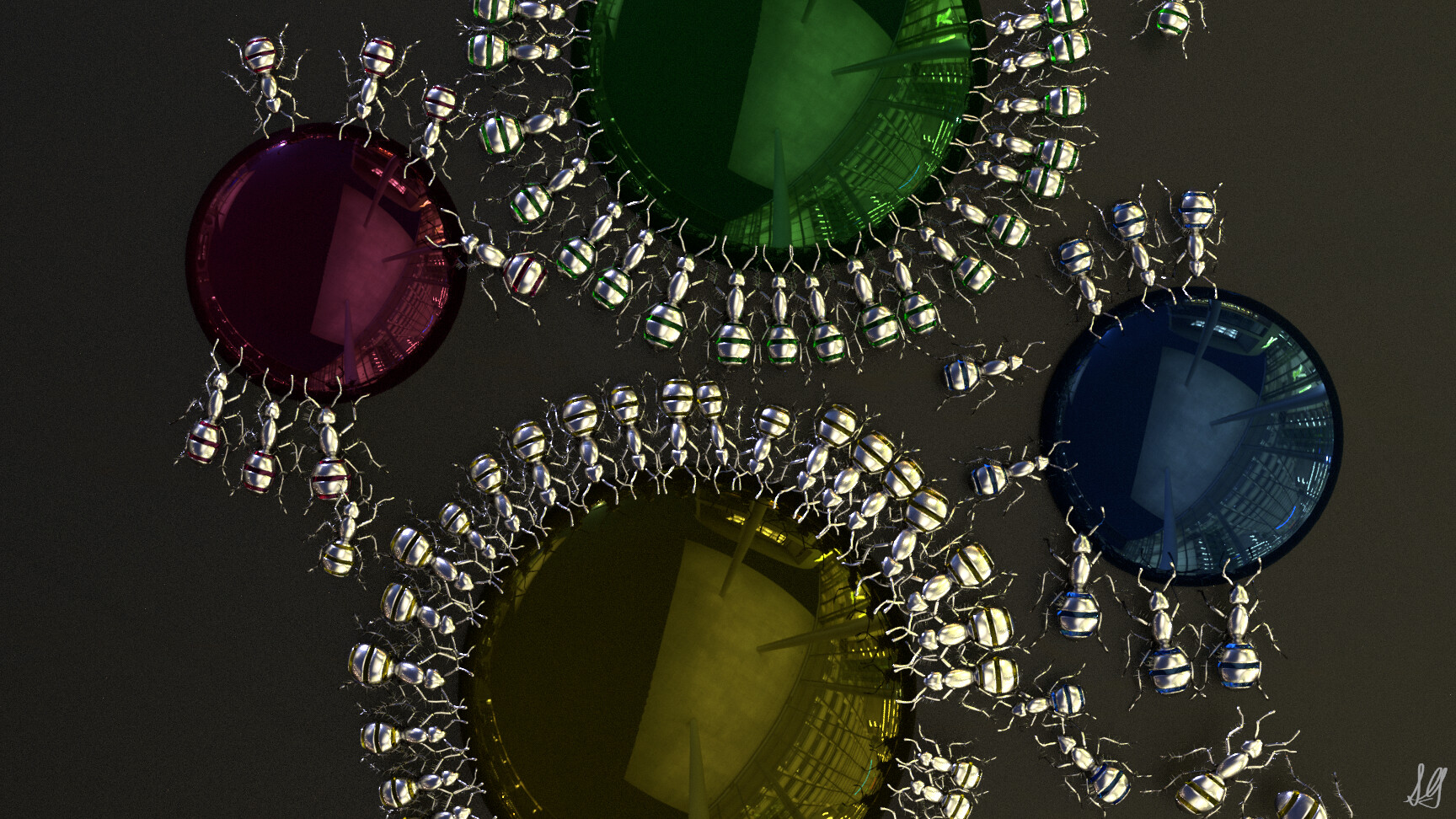Stonecutter Ants
by hughpierre
As the name gives away, stonecutters are capable of cutting stone and other hard rocks to build their tower homes.
Basic Information
Anatomy
Polymorphism
Depending on what an ant eats as a larvae would determine which job it would have in the colony as an adult. The largest ants act as soldiers to defend the colony. Medium sized ants collectively excavate tunnels or collect garbage and the smallest raise the young and scavenge fungus and other food sources for the whole colony.Ecology and Habitats
Stone Mounds
The ants are formidable architects. Millions work together to build and maintain individual stone towers standing with a 50ft presence. Together, they stand stronger than a city; having a relatively thick outer shell, prickly exterior and minimal openings to the open air. They are made from the ants' saliva, feces and rocky clay. The superstructure extends to a labyrinth of underground nesting tunnels; many times deeper that the towers are tall.Dietary Needs and Habits
Ice and Stone
The ants build their nests in their food which might also restrict their movement and for how long that colony lived; if not for their building prowess.Omnivorous
Stonecutter ants are also opportunistic scavengers - burrowing through whatever dead thing is frozen on the ground.Additional Information
Social Structure
Eusociality
A colony enables efficient resource exploitation and nest construction that contribute to its own survival and success. There are distinct castes:- The queen, who is the sole reproductive individual
- Workers responsible for foraging, nest maintenance, and caring for the brood
- Soldiers tasked with colony defense.
Uses, Products & Exploitation
Stond Mounds
These mounds can outlive the colonies themselves, so long as they remain undisturbed. These structures are so sturdy and resistant to temperature that people who live closeby devise methods to drive out the ants, from certain sections, in order to break them down and quarter away to build their own defenses.Geographic Origin and Distribution
Wet Wilds
Stonecutters would prefer environments that are warm and wet, but these are rare in a place called the cold swamp. Instead, they go underground, past the permafrost, where it is apparently warmer. Eventually, mound building emerged as a way to keep the nests stable. The air in the outer tunnels tends to be colder than the inner air; resulting in a ventilating air flow that keeps the residents warm.
Lifespan
1 - 3 weeks
Average Length
Average Physique
Facial characteristics
Horizontal Mandibles
Body Tint, Colouring and Marking
Greyish




Comments
Author's Notes
Crafting Creatures 2024